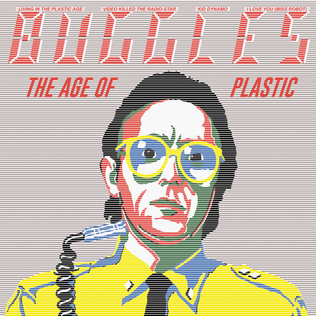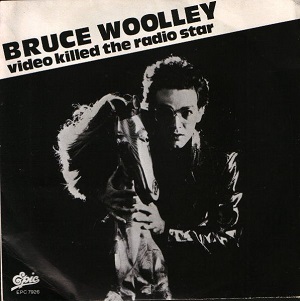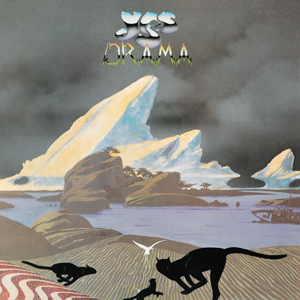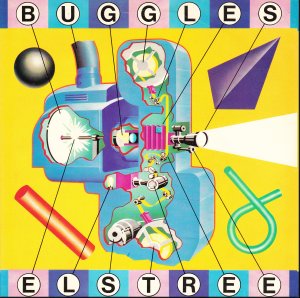
The Buggles are an English new wave band formed in London in 1977 by singer and bassist Trevor Horn and keyboardist Geoff Downes. They are best known for their 1979 debut single "Video Killed the Radio Star", which topped the UK Singles Chart and reached number one in 15 other countries and was chosen as the song to launch MTV in 1981.

The Age of Plastic is the debut album by the English new wave duo the Buggles, released on 10 January 1980 on Island Records. It is a concept album about the possible repercussions of modern technology. The title was conceived from the group's intention of being a "plastic group" and the album was produced in the wake of the success of their debut record, "Video Killed the Radio Star" (1979), which topped the UK Singles Chart. Most of the album's other tracks were written during promotion of the single.

Trevor Charles Horn is an English record producer and musician. His influence on pop and electronic music in the 1980s was such that he has been called "the man who invented the eighties".

Art of Noise were a British avant-garde synth-pop group formed in early 1983 by engineer/producer Gary Langan and programmer J. J. Jeczalik, along with keyboardist/arranger Anne Dudley, producer Trevor Horn, and music journalist Paul Morley. The group had international Top 20 hits with its interpretations of "Kiss", featuring Tom Jones, and the instrumental "Peter Gunn", which won a 1986 Grammy Award.

"Video Killed the Radio Star" is a song written by Trevor Horn, Geoff Downes and Bruce Woolley in 1979. It was recorded concurrently by Bruce Woolley and the Camera Club for their album English Garden and by British new wave/synth-pop group the Buggles, which consisted of Horn and Downes.

90125 is the eleventh studio album by the English progressive rock band Yes, released in November 1983 by Atco Records. After Yes disbanded in 1981, following the Drama (1980) tour, bassist Chris Squire and drummer Alan White formed Cinema, and began recording an album with guitarist and singer-songwriter Trevor Rabin and original Yes keyboardist Tony Kaye, who had been fired in 1971. They adopted a more commercial and pop-oriented musical direction as the result of their new material, much of which derived from Rabin's demos, with former Yes singer Trevor Horn as their producer. During the mixing stage, former Yes singer Jon Anderson, who had left in 1980, accepted the invitation to return and record the lead vocals, and subsequently Cinema became the new lineup of Yes.

Adventures in Modern Recording is the second and most recent studio album by English new wave group the Buggles, released on 11 November 1981 by Carrere Records. Although the Buggles began as a duo of Trevor Horn and Geoff Downes, the album ended up as mostly Horn's solo effort, as Downes left to join the English rock band Asia on the day recording was originally scheduled to begin. It contains nine tracks, including a version of a track from the Yes album Drama (1980), recorded during Horn and Downes' short initial tenure with the band. Originally named "Into the Lens", the Buggles rendition is titled "I Am a Camera". A stylistically and sonically varied progressive electronic album, Adventures in Modern Recording depicts Horn perfecting his skill as producer and was described by journalists as a document for how he would produce his later works. It was one of the earliest albums to use the Fairlight CMI, one of the first digital sampling synthesizers.

Drama is the tenth studio album by the English progressive rock band Yes, released on 18 August 1980 by Atlantic Records. It was their only album to feature Trevor Horn on lead vocals and the first with Geoff Downes on keyboards. This followed the departures of Jon Anderson and Rick Wakeman after attempts to record a new album in Paris and London had failed. Drama was recorded hurriedly with Horn and Downes, as a tour had already been booked before the change in personnel. The album marked a development in Yes' musical direction, combining the band's progressive signature with Horn and Downes' new wave sensibilities.

Bruce Martin Woolley is an English musician, singer, songwriter, and record producer. He wrote songs with artists such as the Buggles and Grace Jones, including "Video Killed the Radio Star" and "Slave to the Rhythm", and co-founded the Radio Science Orchestra.

Barking at Airplanes is the ninth studio album by American singer-songwriter Kim Carnes, released on May 5, 1985, by EMI America Records.

Geoffrey Downes is an English keyboardist who gained fame as a member of the new wave group the Buggles with Trevor Horn, the progressive rock band Yes, and the supergroup Asia.

"Elstree" is a song by the Buggles from their debut album, The Age of Plastic. It was the fourth and final single from the album, released on 27 October 1980. It was written by Trevor Horn and Geoff Downes.

"Clean, Clean" is a song composed by Trevor Horn, Geoff Downes and Bruce Woolley. It was recorded first by the latter for his band Bruce Woolley and the Camera Club in 1979, and later by the former two as the Buggles for their debut album The Age of Plastic. It was released as the album's third single on 24 March 1980.
"I Love You (Miss Robot)" is a song written, performed and produced by the Buggles, a duo of Trevor Horn and Geoff Downes, for their 1980 debut studio album The Age of Plastic. It was not released as a single. The song is, according to Downes, about "being on the road and making love to someone you don't really like", although music critics consider the song's subject having to do with a robot. The song was performed live in 2010, as part of the first performance of all the tracks from The Age of Plastic.

Fly from Here is the twentieth studio album by the English progressive rock band Yes. It was released on 22 June 2011 by Frontiers Records, and is their only album featuring lead vocalist Benoît David and keyboardist Oliver Wakeman. Yes reformed in 2008 after a four-year hiatus with a line-up of David, Wakeman, bassist Chris Squire, guitarist Steve Howe, and drummer Alan White. The band prepared material to record for Fly from Here during breaks in touring in 2010 and 2011, during which they enlisted former Yes frontman Trevor Horn as producer. After songs contributed by Wakeman were scrapped in favour of expanding the song "We Can Fly" into a 24-minute six-part "Fly from Here" suite, the band replaced him with former Yes keyboardist Geoff Downes as he co-wrote much of the new material.

The Trevor Horn Band are an English group formed in 2006 as the Producers, when they included record producers Trevor Horn and Steve Lipson (guitar), and musicians Lol Creme and Ash Soan (drums). The band briefly adopted the name US before changing to Producers. Latterly, they have switched to the name The Trevor Horn Band.
"Fly from Here" is a set of songs by progressive rock band Yes from their 2011 album Fly from Here and its 2018 remixed edition Fly from Here – Return Trip. With a complete length of 23 minutes and 49 seconds, the original version of "Fly from Here" is the longest composition ever released by Yes, beating "The Solution" by two seconds, while the Return Trip re-recording is 21 minutes and 31 seconds long.
"Ride the Wild Wind" is a song by British rock band Queen. The song was written by Roger Taylor. It was originally released on their fourteenth studio album Innuendo in 1991. In Poland it peaked at No. 1 due to the radio airplay chart.

English Garden, released in North America as Bruce Woolley and the Camera Club, is a studio album by Bruce Woolley and his new wave band the Camera Club. The band consisted of Woolley on vocals, Matthew Seligman on bass, Rod Johnson on drums, Dave Birch on guitar, and Thomas Dolby on keyboards. Before forming the group, Woolley was creating pop songs intended for publishing companies, but he was not happy with what the artists were doing with his songs and decided to write material for himself.

















